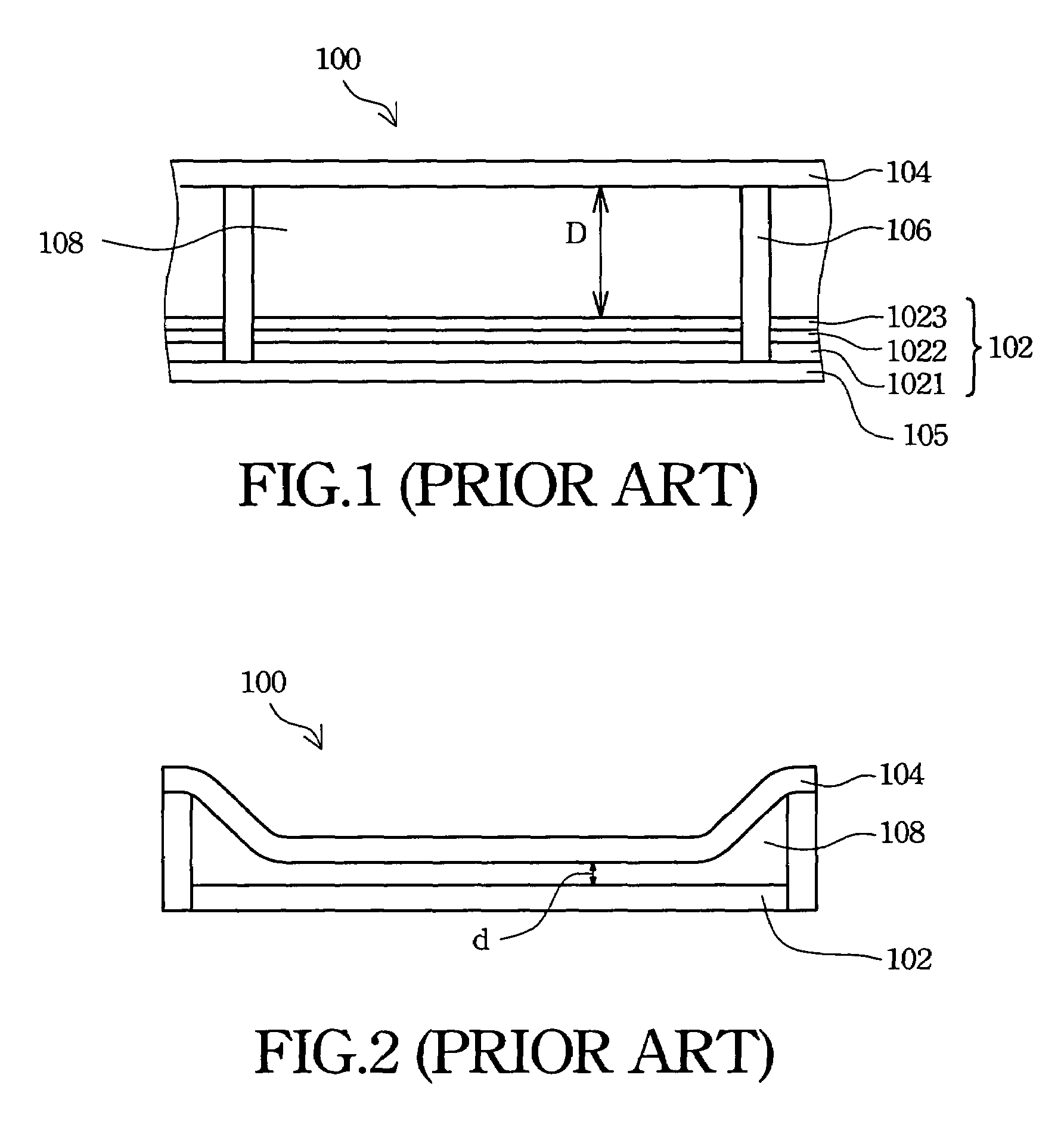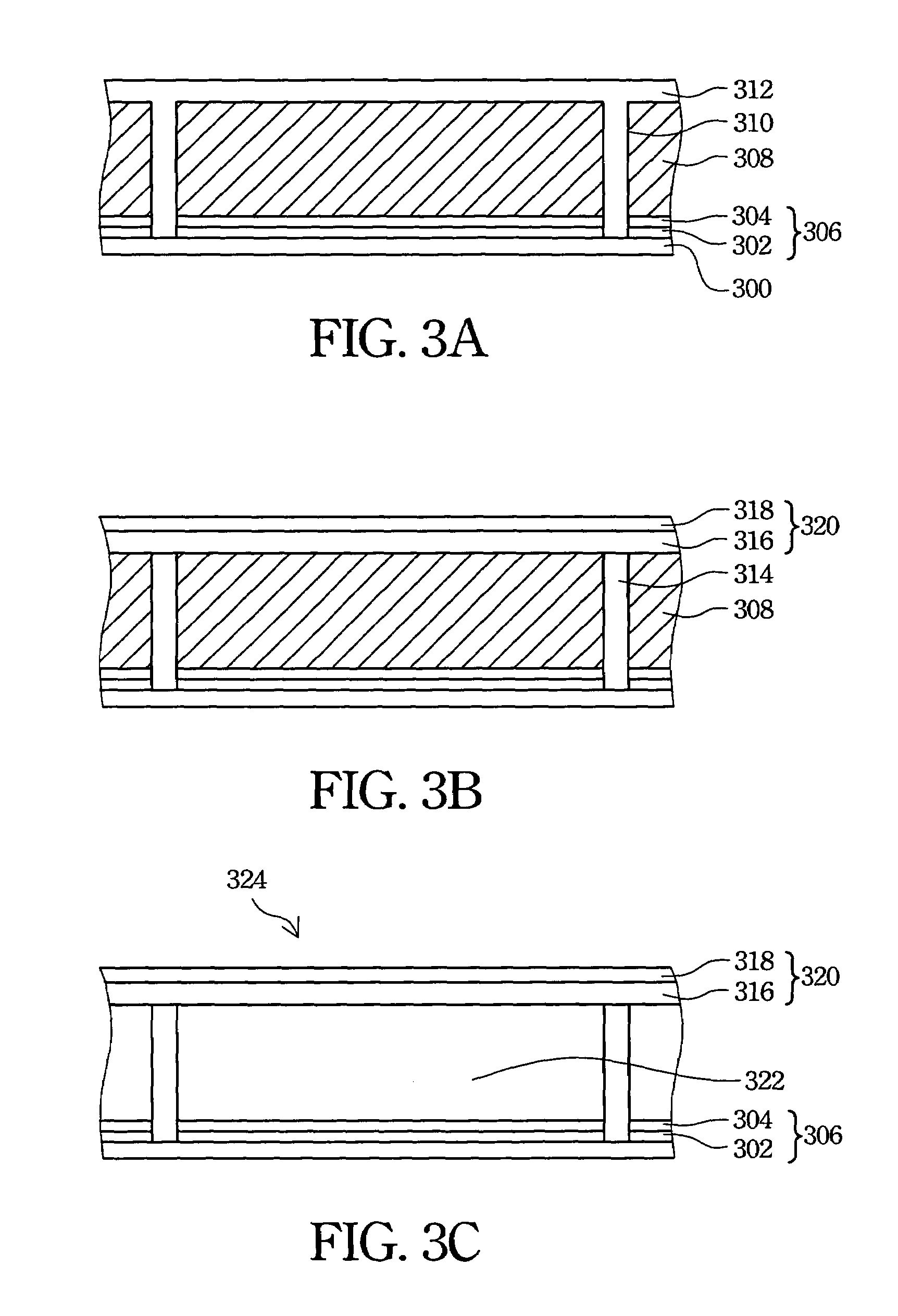Structure of an optical interference display unit
a technology of optical interference and display unit, which is applied in the direction of television system, identification means, instruments, etc., can solve the problems of increasing the complexity of the process, and achieve the effects of improving the mechanical stress of the light absorbing layer, good uniformity and quality, and simplifying manufacturing steps
- Summary
- Abstract
- Description
- Claims
- Application Information
AI Technical Summary
Benefits of technology
Problems solved by technology
Method used
Image
Examples
example
[0026]FIG. 3A to FIG. 3C illustrate a method for manufacturing an optical interference display unit in accordance with a preferred embodiment of the present invention. Referring to FIG. 3A, a transparent conductive layer 302 is formed on a transparent substrate 300. The material of the transparent conductive layer 302 can be indium tin oxide (ITO), indium-doped zinc oxide (IZO), zinc oxide (ZO), indium oxide (IO) or a mixture thereof. Thickness of the transparent conductive layer 302 is selected depending upon the requirement, but is typically tens to thousands of angstroms.
[0027]After the transparent conductive layer 302 is formed, at least one optical film 304 is formed on the transparent conductive layer 302. The material of the optical film 304 can be dielectric material such as silicon oxide, silicon nitride or metal oxide. The transparent conductive layer 302 and the optical film 304 constitute the light-reflection electrode 306. Then, a sacrificial layer 308 is formed on the ...
PUM
| Property | Measurement | Unit |
|---|---|---|
| transparent | aaaaa | aaaaa |
| thickness | aaaaa | aaaaa |
| structure | aaaaa | aaaaa |
Abstract
Description
Claims
Application Information
 Login to View More
Login to View More - R&D
- Intellectual Property
- Life Sciences
- Materials
- Tech Scout
- Unparalleled Data Quality
- Higher Quality Content
- 60% Fewer Hallucinations
Browse by: Latest US Patents, China's latest patents, Technical Efficacy Thesaurus, Application Domain, Technology Topic, Popular Technical Reports.
© 2025 PatSnap. All rights reserved.Legal|Privacy policy|Modern Slavery Act Transparency Statement|Sitemap|About US| Contact US: help@patsnap.com



